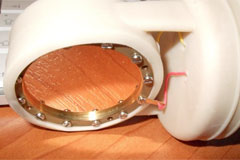 RØDE NT1-A
RØDE NT1-A
Cardioid Condenser Microphone
The NT1-A is a revision to the company’s NT1, a fixed-cardioid, large-diaphragm FET condenser.
The original NT1 was was designed by Jim Williams of Audio Upgrades, and employed high-grade through-hole components. The NT1-A was described as an “Anniversary” edition, but is essentially an entirely new microphone design.
How did the NT1-A differ from the NT1?
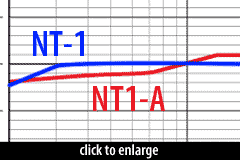 Perhaps most significantly, the NT1-A employs surface-mount components on the circuit board. This enabled assembly automation and lowered the production cost of the microphone.
Perhaps most significantly, the NT1-A employs surface-mount components on the circuit board. This enabled assembly automation and lowered the production cost of the microphone.
The surface-mount PCB design for the NT1-A was adapted from the company’s NT1000, according to MIX, although it boasted superior specifications to the NT1000 (as well as the NT1).
The conversion to surface-mount components also included an IC-based replacement for the DC power oscillator circuit; this no doubt reduced costs, and most likely improved the consistency from mic to mic. To be clear, the integrated circuit on the NT1-A board is not part of the audio circuit; it is simply a voltage multiplier feeding DC voltage to power the capsule.
In the sample microphone we tested, the backplate was polarized to +75VDC — which is high for a condenser capsule, but is presumably part of the reason the mic has such a low noise floor.
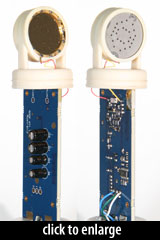 For example, the NT1-A’s self-noise is just 5dBA, whereas its predecessor produced 13–17dBA of self-noise (reports vary). The newer mic was billed as “The World’s Quietest Studio Condenser Microphone,” and although quieter mics have since been produced, the NT1-A remains among the lowest noise condensers we’ve seen.
For example, the NT1-A’s self-noise is just 5dBA, whereas its predecessor produced 13–17dBA of self-noise (reports vary). The newer mic was billed as “The World’s Quietest Studio Condenser Microphone,” and although quieter mics have since been produced, the NT1-A remains among the lowest noise condensers we’ve seen.
The grille of the NT1-A is slightly larger than on the NT1, according to Audio Technology, and the exterior finish changed from “hospital blue” to satin nickel.
The capsule in the NT1-A is said to have been retained from the original mic, but reports from mic owners suggest that some production runs utilized alternative capsules. Our best information is that the NT1-A uses a 34mm edge-terminated capsule (28mm diaphragm), whereas photos of the NT-1 show what appears to be a typical China-supplied K67 derivative (center-terminated).
Michael Joly
The NT1 and NT1a mics use three different capsule variations based around the K67-type backplates. One of them is center-terminated and is basically a K67 recreation (intentional 8kHz boost). Another … has a HF resonator plate for even more HF [boost]. And the third type of capsule uses the K67 backplate pattern, but the diaphragm is edge-terminated and has a very unusual drilled aluminum plate on the back side instead of the usual back diaphragm.
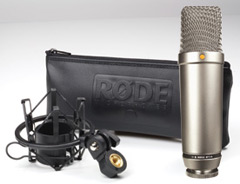 The NT1-A is supplied with a shock mount and zip pouch.
The NT1-A is supplied with a shock mount and zip pouch.
The NT1-A is also available in a factory-matched pair.
Audio Technology, 2003
Sonically the NT1-A seems to have a little more in the extreme highs and less midrange presence than the NT1, making it a slightly smoother and more comfortable microphone to use on vocals and stringed instruments.
MIX
The new NT1-A (the “A” stands for “anniversary model”) comes from pairing the true condenser (externally polarized), 1-inch-diameter, gold-sputtered capsule from the original NT1 with J-FET surface-mount electronics modeled on RØDE’s NT1000 for an entirely new creation, with a personality of its own, an impressive 5dBA self-noise spec and a new nickel-finish body.
Electronic Musician, 2003
The NT1-As … sounded great in every application appropriate for large-diaphragm condensers. They can handle extremely loud SPLs without the need for a pad, and their self-noise spec is a huge bonus. The frequency response is very smooth all the way from 20 Hz to 20 kHz, with only a very small presence bump around 12 kHz.
The RØDE NT1-A is also known as: NT1A.
The mic was released in 2004.
Specifications
| Frequency Response - CardioidClick Graph to Compare! |
|---|
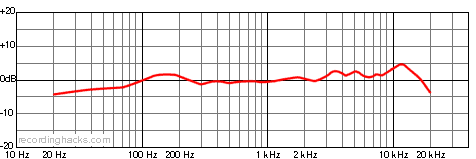 |
| Pickup Patterns | Pads & Filters |
|---|---|
|
Cardioid
(25 mV/Pa; 20 - 20,000 Hz) |
|
| Capsule Dimensions | Impedance | SPL/Noise |
|---|---|---|
| Diaphragm diameter: 28mm Capsule diameter: 34mm |
100 Ohms (Low) | Max SPL: 137 dB Self-noise: 5.0 dB(A) |
| Weight | Length | Max Diameter | Interface(s) |
|---|---|---|---|
| 326g (11.50oz) | 190mm (7.48'') | 50mm (1.97'') |
|
| Power Specifications |
|---|
|
Did we get anything wrong on this page? Please let us know!






